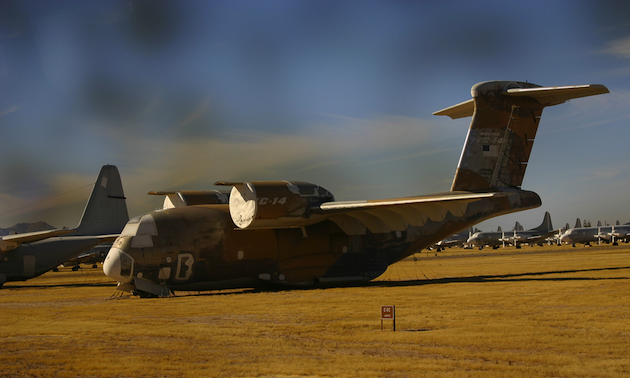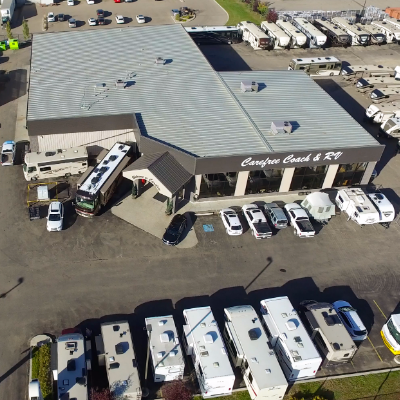Another treasure in Tucson: the airplane boneyard
The yard extends as far as you can see against a backdrop of Arizona mountains and deep blue sky.

Even last year, Fred wanted to visit the Boneyard. Greg told him he could see it from outside the fence. We looked, but there was no place to pull off the road so he didn’t get a chance to see it. This year, when we saw the aerospace museum in our coupon book, we decided to try again.
The Boneyard is actually separate from the museum. You don’t need to pay to get into the museum to tour the Boneyard, but you do need to access the tickets through the cashier there.
There is no doubt the U.S.A. is totally into their military. And the Aerospace Maintenance and Regeneration Center—the Boneyard—is a major facility attached to the Davis-Monthan Air Force Base. There aircraft is stored, maintained and rejuvenated for all branches of the military.
Fun even for non-fans
Not interested in old airplanes? I didn’t think I was either, but this was different. We toured around the 2,600 acres on a bus with a veteran guide and saw over 4,200 aircraft. Every year between 25,000 and 30,000 visitors tour the Boneyard.
In 1946, a place was needed to store the old planes and bombers of the Second World War. Tucson was the perfect place—it’s dry and the ground can support the weight of some of these monstrous mechanical birds. The yard extends as far as you can see against a backdrop of Arizona mountains and deep blue sky.
How it works
When an aircraft is brought in for storage, all guns, ejection seat charges and classified hardware are removed. The fuel system is drained, refilled with lightweight oil, and then drained again for protection. The plane is sealed by a variety of materials from simple garbage bags to high tech vinyl plastic spray to protect it from dust, sunlight, and high temperatures. It is then towed to its designated storage position.
There are four categories of storage:
• Long term: Aircraft are kept intact for future use.
• Parts reclamation: Aircraft are kept, picked apart and used for spare parts
• Flying hold: Aircraft are kept intact for shorter stays than long term.
• Excess to Department of Defence needs: Aircraft are sold off whole or in parts.
What you'll see
I did catch some of the names mentioned by our guide, including the YC-14, a prototype cargo plane designed to replace the C-130 Hercules; the F-100 Super Sabre, the first U.S. Air Force aircraft to break the sound barrier; and the F-4 Phantom, the most common American military supersonic. They were used from 1960 to the mid-1990s.






